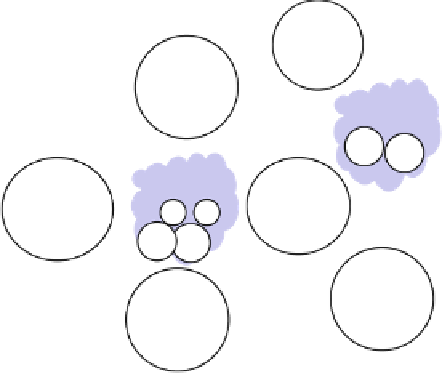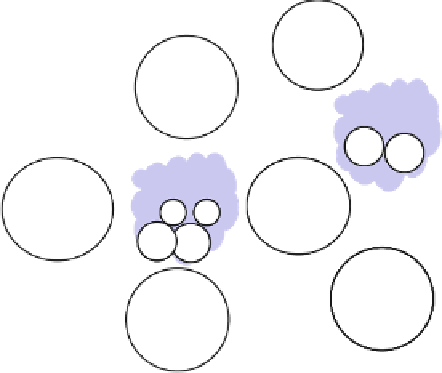Information Technology Reference
In-Depth Information
Fig. 2
Combination of
representations for common
ground in the perspective of
RE activities. Two areas of
common ground are
illustrated, one shared by
requirements engineers (RE1,
RE2) and user stakeholders
(S1, S2), and the other only
shared among requirements
engineers
Generate
Solutions
Generate
Solutions
scenarios
storyboards
prototypes
models
Think &
Think &
Think &
Critique
Think &
Critique
Critique
Critique
Elicit &
Summarise
Elicit &
Summarise
Common
Ground
Common
Ground
Common
Ground
RE1
RE1
RE1
RE1
RE2
RE2
RE2
RE2
Common
Ground
S1
Common
Ground
S1 S2
RE2
Common
Ground
S1 S2
RE2
Validate
Communicate
Analyse &
Reflect
Analyse &
Reflect
Validate
Communicate
S1
S2
RE2
S2
RE1
RE1
RE1
RE1
RE2
Check &
Verify
Negotiate
& Agree
Negotiate
& Agree
Converse
Converse
&
Discuss
& Discuss
& Discuss
& Discuss
model
formal
languages
Informal models enable abstract viewpoints to be debated; but models may hide
ambiguities and, worse still, assertions may go unchallenged. Models, even informal
use cases and data flow diagrams, belong to the realm of the requirements engineer,
rather than being part of users' normal discourse. Hence there is a tendency for
disjunction to appear between specific and abstract common ground, with require-
ments engineers focusing on abstractions and users tending to favour the specific.
The solution to this dilemma is to juxtapose concrete and abstract representations,
for example using scenarios to challenge models and vice versa. This intuition has
emerged in some RE methods such as ScenIC [
18]
where a range of scenarios
provide challenges to input process specified in models and then the acceptabil-
ity of output from system models is evaluated in the light of scenarios of use. This
combination of representations helps to bridge the concrete and abstract division in
common ground, as summarised in Fig.
2.
4.3 Negotiate and Agree
Negotiating, prioritising and achieving mutually agreed requirements all focus on
the process of establishing common ground between stakeholders. Representations
have a special role to play in this activity since common ground in conversation is
the human equivalent of cache memory; unfortunately its contents are limited, and
become lost as they are overwritten by new input. This means we can only process a
limited quantity of information at once. However, decisions and negotiations require
consideration of many facts and options. Representations overcome the limitations







































Search WWH ::

Custom Search